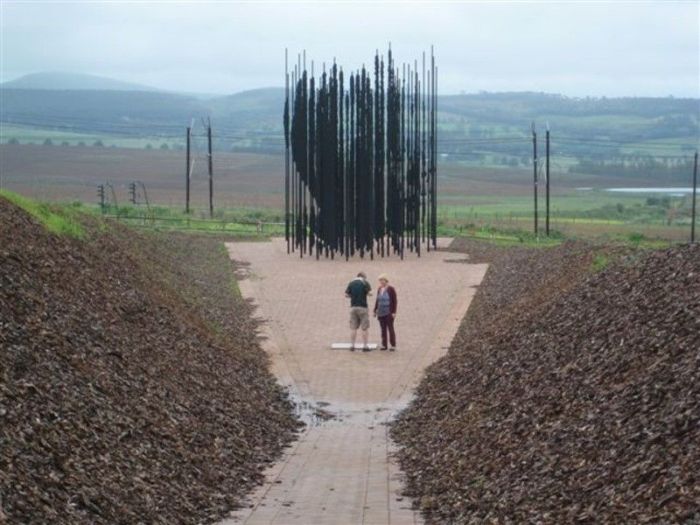|
|
Nelson Mandela Sculpture By Marco Cianfanelli
|
Collapsing the categories and conventions that sort our experience, he strives to invent forms that bring together thoughts in relation to economics (statistics, values and economies of scale), geography (resources, place and ownership) and emotion (self, psychology and chemistry). Human forms superimposed on a graphical index track personal narratives in relation to seemingly unrelated empirical data. The silhouettes of human figures appear repeatedly in relation to other shapes or forms that point to unexpected connections between social forces. In other instances, statistics are translated into physical forms, so graphs become landscapes, affirming the idea that nature, culture, landscape and politics are inextricably interfused.
For him, the idea of ‘place’ refers beyond fixed geographical co-ordinates. It is an emissary from the past as well as a construction-site of invention and re-invention. Place, or its absence, points to our intellectual and emotional desires for location, which are as much about the construction of Self as they are about a sense of community or even nationality.
In Cianfanelli’s forms one becomes aware of images and shapes that are, in a sense, made apparent through omission. Aspects of the object may not be entirely visible. Parts may be hidden or simply missing. Sometimes it is as if the works are remainders of images that used to be or images that have been replaced, obscured or erased. Cianfanelli is drawn to the expressive possibilities of blank space, and the aesthetic patterns that result from obscuration and omission. Yet his work has little to do with the pursuit of purely formal abstraction. The images or references within the artworks are quite specific, even though they have been visually obscured or omitted.
Scale is pivotal. By reinterpreting numbers and playing with measurements, Cianfanelli repeatedly interrogates the mysterious connectivity between microbes and planets.
|
|









